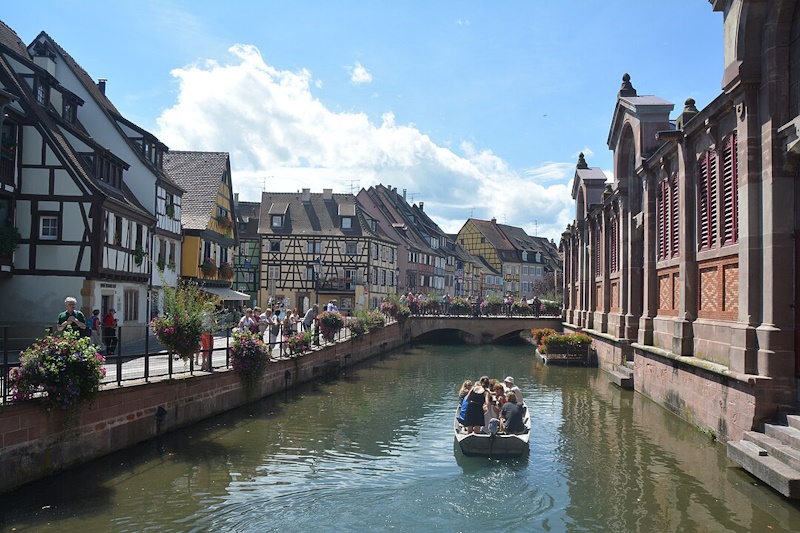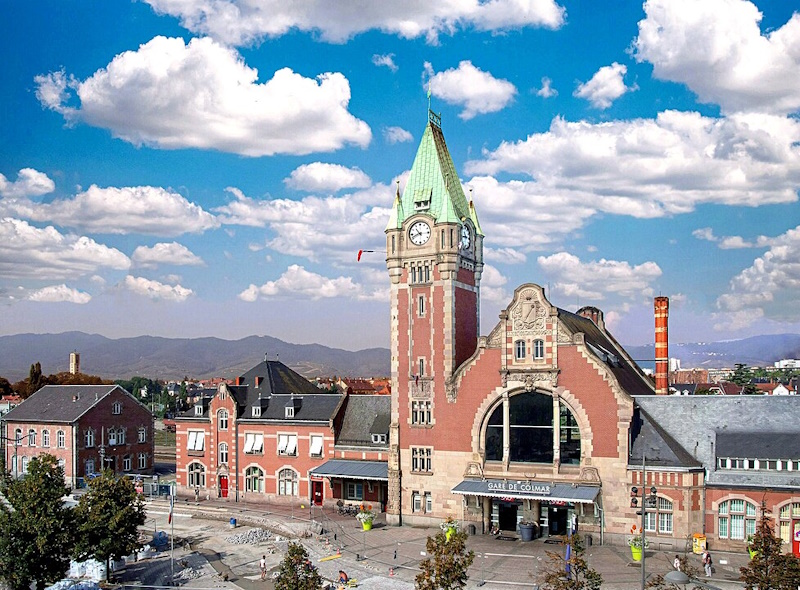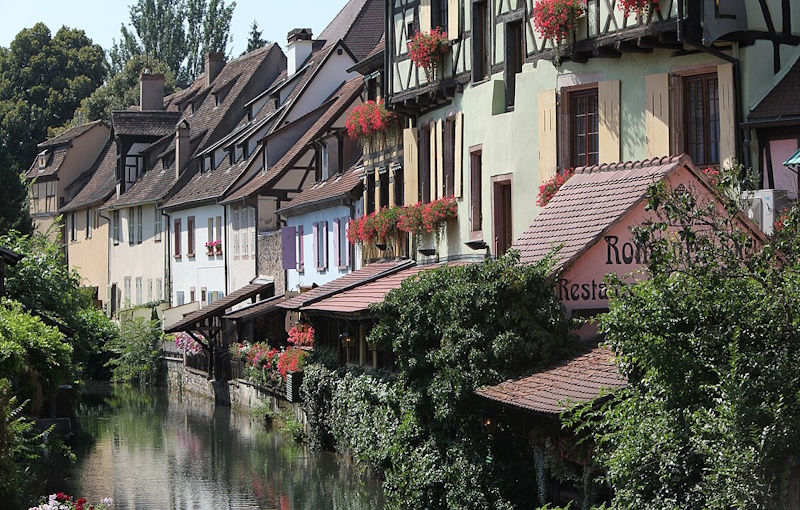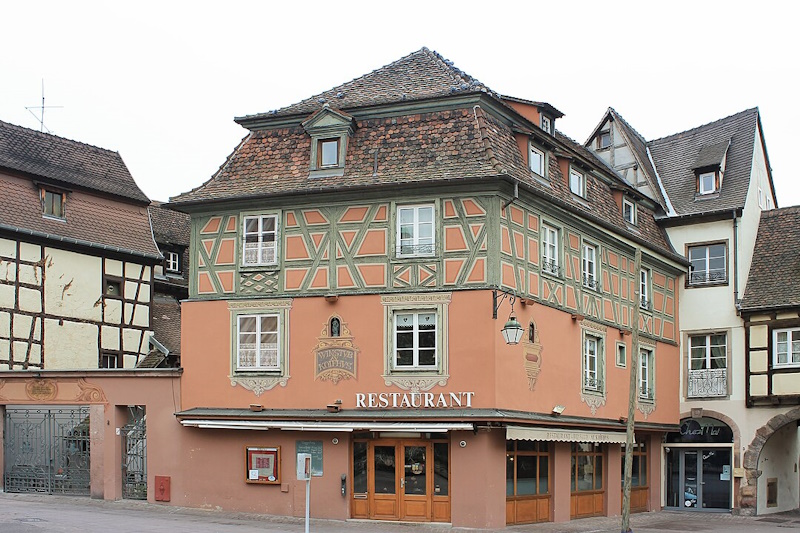7 Traveler Tips for Visiting Colmar & Little Venice
Colmar is a small town in eastern France, near the German border. Its canal-side houses and flower-covered windows draw thousands of visitors each year. The Little Venice district gets most of the attention, but the real experience goes beyond the postcard views.
This guide breaks down what travelers actually encounter – what’s worth seeing, when to go, what to eat, and what to expect once you’re there.
UPDATE: I’ve added 3 more tips suggested by travelers.
1. Little Venice is real, but the magic is in walking

The canal area is charming, and many visitors say it feels like a painting. It’s famously the town that inspired Belle’s village in Beauty and the Beast, and the colors and shapes of the old houses live up to that.
But if you’re expecting gondola rides and big waterways, keep your expectations in check. The boat rides are gentle and short.
The best way to enjoy Colmar is to walk slowly, take in the details, and explore the town on foot. That’s where you find the charm most people talk about.
2. Colmar gets crowded – timing matters
Tourism has grown a lot. Travelers say the town can feel packed in summer and especially in December, when the Christmas markets fill every square.
If you want a quieter experience, arrive early in the morning or stay overnight and explore after the day-trippers leave. Late November and early December offer the lights and decorations of the holiday season with fewer crowds.
3. Getting there is easy by train

You can reach Colmar from Paris in about an hour and a half by high-speed train with no transfers – unless there’s a strike (which happens occasionally in France).
The station is close to the old town, about a ten-minute walk. Once you arrive, you won’t need a car. The whole center is compact. Everything from cafés to museums to the canal is within walking distance.
4. Spring and winter both have strong appeal

In spring, flowers cover balconies and gardens, and the weather is mild. In winter, Colmar becomes one of Europe’s most atmospheric Christmas towns. The markets are a big draw, and visitors say the entire center glows with decorations.
It’s colder, but the atmosphere more than makes up for it. Summer can be nice too, but it gets busier and hotter.
If you want crisp air and quiet streets, early spring or late fall are safer bets.
5. Don’t miss Eguisheim, Turckheim, or Strasbourg
Eguisheim is just ten minutes away and is often described as even more beautiful than Colmar. It’s quieter, has fewer tourists, and more flowers.
Turckheim is another nearby village with medieval streets and a slower pace.
Strasbourg is only 30 minutes away by train and offers bigger city energy, with a cathedral you can climb, a charming historic center, and a student population that keeps it lively day and night.
6. Local food is rich, traditional, and worth trying

Colmar is a great place to try Alsatian cuisine. Choucroute – Sauerkraut with sausages and pork, creamy flammeküeche, pretzels, apple tarts, and kougelhopf are all local staples.
Many dishes are hearty, wine-soaked, or dairy-based, and perfect for slow lunches or long dinners. Cheese lovers should try Munster, and anyone with a sweet tooth will find Kougelhopf at bakeries and cafés.
Don’t miss the regional wines, especially Riesling and Gewürztraminer, or the stronger schnapps and fruit liqueurs served in traditional winstubs.
7. Don’t expect a big nightlife scene
Colmar winds down early. Travelers often report that by 8:30 pm, things get quiet, even on weekends.
The local tradition is to go for drinks in the afternoon (especially for apéro), then settle in for a long dinner. Bars are busiest around 4-6 pm, but most people are home by midnight.
If you’re looking for late-night options, head to Strasbourg. There are more bars and clubs, and the train ride is quick.
8. It’s dog-friendly, laid-back, and clean
Dogs are welcome at most restaurants and are often seen lying quietly under tables.
The town stays clean year-round, and most visitors say there’s no canal smell, even in summer. Some wonder if there might be flies or bad odors like in other canal towns, but those who’ve been there say it’s not a problem, at least outside of peak heat.
9. You can live here without breaking the bank
If you’re dreaming of a longer stay, it’s more doable than in bigger cities. A small apartment in Colmar’s center rents for around 500 euros a month, including utilities.
Minimum wage in France sits around 1,200 to 1,300 euros per month. Travelers thinking about living and working odd jobs while exploring France might find Colmar to be a surprisingly realistic option.
10. Locals speak French, German, Alsacien
Colmar is located near the German border, and that shows in the culture and language. Many locals speak a bit of German and English. French is the main language, of course.
Some people also speak Alsacien, a dialect that mixes French and German. It’s full of strange phrases and creative swearing, often heard while driving.
One example shared by a local: “You six-motored pig,” shouted in Alsacien, sounds bizarre and poetic all at once.
In Conclusion
Colmar is small, walkable, and full of character. It’s the kind of place where you don’t need a checklist. The scent of baked kougelhopf in a side street, the shape of the rooftops reflected in the canal just before sunset, all creates a unique experience.
Want a quiet base to slow down, eat well, and see a different side of France? Colmar makes a strong case for itself.

